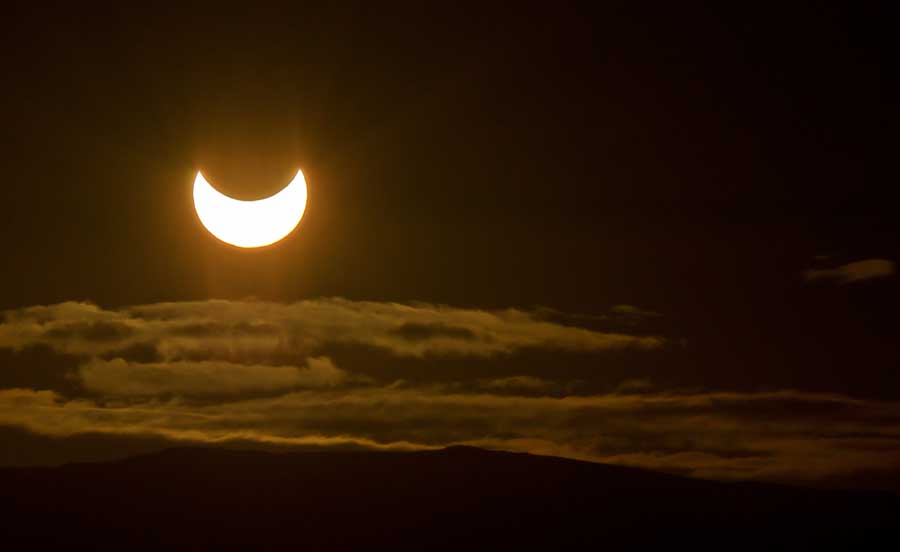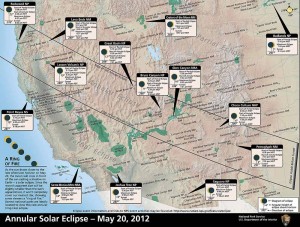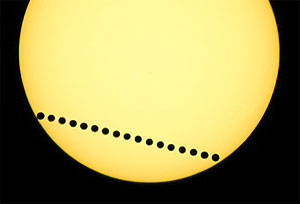
From Staff Reports
MOOSE, WYO. — National parks across the country are preparing for the arrival on Sunday of sky-watchers and photographers anxious to take in an annular solar eclipse amid the natural beauty of wide open spaces, and Grand Teton National Park is no exception. The Grand Teton eclipse is expected to occur as the sun sets above the Teton Range, and it should offer a dramatic show of natural splendor for greater Yellowstone area photographers and astronomers.
The National Park Service will host a Grand Teton eclipse viewing event starting at 6 p.m. Sunday, May 20, at the Willow Flats Overlook, north of Jackson Lake Junction. Bob Hoyle, a professional astronomer and park ranger naturalist, will conduct the event in partnership with the Jackson Hole Astronomy Club.

A partial solar eclipse will be visible across Jackson Hole, with about 80 percent of the sun obscured by the passing moon at mid-eclipse. This high point of coverage should occur at approximately 7:30 p.m., when the sun is low in the western sky. The Grand Teton eclipse will end as the sun drops behind the jagged Teton Range. During an informal program, Hoyle will explain the circumstances necessary for an eclipse to occur, and describe the current increase in solar flare activity sunspots reach a cyclical maximum.
Several telescopes equipped with special solar filters will be available to safely watch the Grand Teton eclipse. Park officials and scientists widely caution skywatchers and photographers to avoid looking directly at an eclipse with the naked eye, no matter how dim it may appear.
Even when mostly or totally obscured, viewing the sun at length — directly or with binoculars or other optics not designed for eclipse-watching — can be harmful, and may lead to permanent eye damage. Special hand-held filters will be available for viewing the Grand Teton eclipse safely without a telescope. Viewers will also have the chance to see some of the numerous sunspot groups visible on the sun’s surface.
Sunday’s solar event is an annular eclipse in which the Moon is near apogee — the greatest distance from Earth — and does not completely cover the Sun. A visible ring of sunlight or annulus (Latin for “ring”) frames the Moon at mid-eclipse.
This solar eclipse will be most visible along a path that passes through several national parks in the southwest, through parts of Nevada, and off the southern Oregon coast.
The last time an annular solar eclipse was seen across most of the U.S. was 1994.
But if you can’t take in Sunday’s Grand Teton eclipse, don’t worry, there’s still time to plan for upcoming celestial events.

On June 5, viewers in most of the U.S. will be able to see the transit of Venus. The National Park Service will host a Grand Teton transit of Venus event. The planet Venus will cross the face of the sun, appearing as a dark, tiny silhouette against the fiery orb — an event that only happens perhaps twice in a lifetime.
Long-term planners and sky-watchers around the Yellowstone National Park and the Grand Teton area should mark their calendars for Aug. 21, 2017. On that date, a total solar eclipse will be visible in Grand Teton (but not Yellowstone) at around 11:35 a.m. (That date is a Monday, so you might want to ask now for time off from work.)
To learn more about the science of eclipses, including viewing tips and information on other events in national parks across the country, visit the National Park Service website.
Reservations are not required for the Grand Teton viewing event. For more information, contact the Colter Bay Visitor Center at 307-739-3590.
Contact Yellowstone Gate at 307-213-9818 or [email protected].
